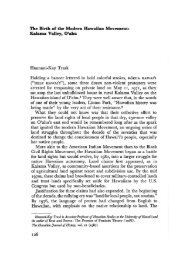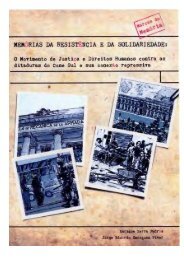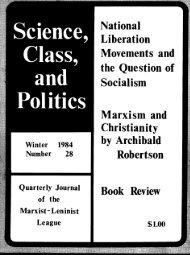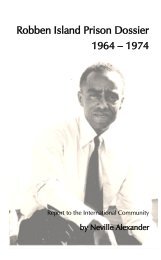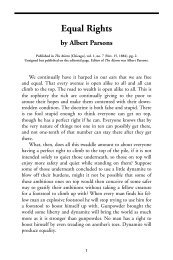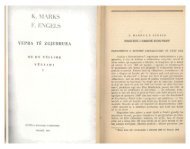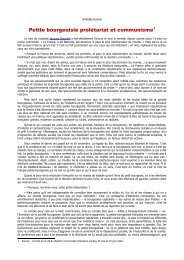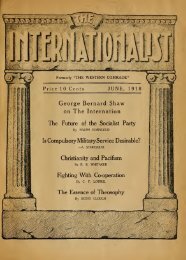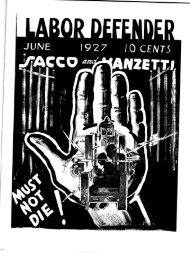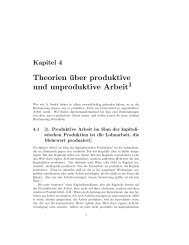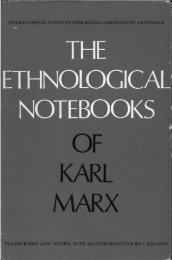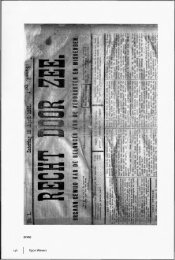The Stalin school of falsification - Marxists Internet Archive
The Stalin school of falsification - Marxists Internet Archive
The Stalin school of falsification - Marxists Internet Archive
You also want an ePaper? Increase the reach of your titles
YUMPU automatically turns print PDFs into web optimized ePapers that Google loves.
<strong>Stalin</strong> School <strong>of</strong> Falsfification - Chapter 6<br />
NOTES:<br />
26. Back in July, 1920, with the whole system a wreck, Trotsky was chosen to restore transportation. One<br />
<strong>of</strong> his first acts was to issue "Order No. 1042," the first serious attempt to introduce long-term planning<br />
into Soviet economy. <strong>The</strong> Order, the first <strong>of</strong> a series <strong>of</strong> systematic measures that finally brought order<br />
and regularity where chaos and collapse had prevailed before, was based upon a five-year outline <strong>of</strong><br />
activity. [BACK TO TEXT]<br />
27. <strong>The</strong> "original critics" <strong>of</strong> Trotskyism referred to are Zinoviev and Kamenev, who were the principal<br />
initiators <strong>of</strong> the fight against Trotsky which they opened in 1928 together with <strong>Stalin</strong>, Bukharin and<br />
Rykov. How the entire campaign was conspira torially and disloyally conceived, is related in the<br />
testimony <strong>of</strong> Radek, Piatakov, Rakovsky, Eltsin and others, printed in this volume in the chapter "<strong>The</strong><br />
Legend <strong>of</strong> Trotskyism." [BACK TO TEXT]<br />
28. <strong>The</strong> "scissors" was an image employed by Trotsky in dealing with the economic crisis in the Soviet<br />
Republic, especially as affecting the peasantry. One blade <strong>of</strong> the scissors was to repre sent the high price<br />
<strong>of</strong> manufactured articles, the other the low price for agricultural products and consequently the low pur<br />
chasing power <strong>of</strong> the rural masses. <strong>The</strong> crisis became increas ingly acute as the "blades" opened wider.<br />
<strong>The</strong> crisis would be eliminated, said Trotsky, by closing the "blades," that is, pri marily, by lowering the<br />
price <strong>of</strong> industrial products. [BACK TO TEXT]<br />
29. Smychka is the Russian word for alliance or union. In popular Russian political parlance, it refers<br />
specifically to the alliance between the workers and the peasants, the firm maintenance <strong>of</strong> which, the<br />
Bolsheviks always insisted, was a pre- condition to the preservation <strong>of</strong> the Soviet power. [BACK TO<br />
TEXT]<br />
30. Among the earliest differences developing between Trotsky and his supporters on one side, and the<br />
leadership <strong>of</strong> the Russian party and the Comintern, on the other, revolved around the strat egy pursued in<br />
the German Revolution <strong>of</strong> October, 1923, the Bulgarian insurrection <strong>of</strong> September, 1928, and the<br />
Esthonian p'utsch <strong>of</strong> December, 1924. For a fuller elucidation <strong>of</strong> the dif ferences, see Leon Trotsky's <strong>The</strong><br />
Third International After Lenin, New York, 1986, specifically the chapter entitled "Strat egy and Tactics<br />
in the Imperialist Epoch," p.75 et seq. [BACK TO TEXT]<br />
31. Vperyodism was the tendency represented by the group calling itself Vperyod [Forward], which was<br />
formed towards the end <strong>of</strong> 1909 in exile by a number <strong>of</strong> ultra-Leftist Bolsheviks, Bogdanov,<br />
Lunacharsky, Alexinsky, Pokrovsky, Menzhinsky, Manuilsky and Gorky. <strong>The</strong> group existed for several<br />
years, issuing a number <strong>of</strong> literary works, and condemning Lenin for having departed from the true<br />
traditions <strong>of</strong> Bolshevism which the Vperyodists alone were now defending. <strong>The</strong> ultra-radicalism <strong>of</strong> the<br />
group, which was displayed in its opposition to utilizing parliamentary partici pation in the Duma, or<br />
active work in the trade unions, was com bined with attempts at philosophical revision <strong>of</strong> Marxism, espe<br />
cially by Bogdanov and Lunacharsky. Lenin devoted an entire volume, Materialism and<br />
Empino-Criticism, to the latter aspect <strong>of</strong> the Vperyodist policy. [BACK TO TEXT]<br />
32. Trotsky refers to <strong>Stalin</strong>'s continual capitulation to the Right wing British trade union leaders,<br />
associated with him in the Anglo-Russian Trade Union Unity Committee, during the period from the end<br />
<strong>of</strong> the General Strike in May, 1926, until the dis solution <strong>of</strong> the Committee a year later. For a more<br />
detailed account <strong>of</strong> the criticism <strong>of</strong> Trotsky, see his <strong>The</strong> Third Interna tional After Lenin, pp. 128-184,<br />
http://www.marxists.org/archive/trotsky/works/1937-st2/sf06.htm (23 <strong>of</strong> 24) [06/06/2002 15:06:34]



